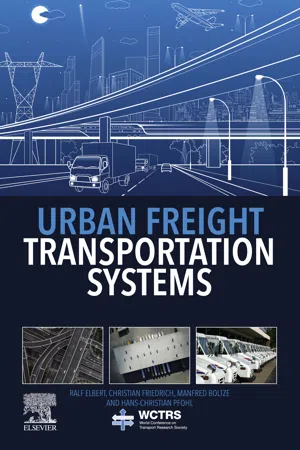
Urban Freight Transportation Systems
- 316 pages
- English
- ePUB (mobile friendly)
- Available on iOS & Android
Urban Freight Transportation Systems
About This Book
Urban Freight Transportation Systems offers new insights into the complexities of today's urban freight transport system. It provides a much needed multidisciplinary perspective from researchers in not only transportation, but also engineering, business management, planning and the law. The book examines numerous critical issues, such as strategies for delivery, logistics and freight transport spatial patterns, urban policy assessment, innovative transportation technologies, urban hubs, and the role factories play in the urban freight transport system. The book offers a novel conceptual approach for addressing the problems of production, logistics and traffic in an urban context.
As most of the world's population now live in cities, thus significantly increasing commercial traffic, there are numerous challenges for efficiently and sustainably delivering goods into cities. This book provides solutions and tactics to those challenges.
- Includes interdisciplinary contributors from around the globe
- Provides never-before-published original research to help users stay current and develop a deeper understanding of the field
- Presents the methods and results of research that is useful for both academics and practitioners
Frequently asked questions
Information
Improving cost efficiency and environmental impact through the integration of light freight and passenger railway transport and last-mile distribution analysis
Abstract
Keywords
1. Introduction
Table of contents
- Cover image
- Title page
- Table of Contents
- Front Matter
- Copyright
- Contributors
- Authors' Biographies
- Emerging issues in urban freight transportation systems—introduction and overview of the book
- Part A. Land-use and urban production
- Part B. Logistics concepts and urban freight transportation
- Part C. Application of new technologies and deployment of electric vehicles
- Index